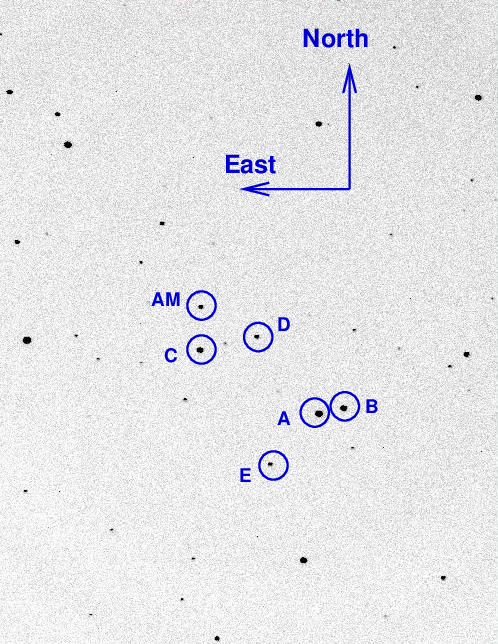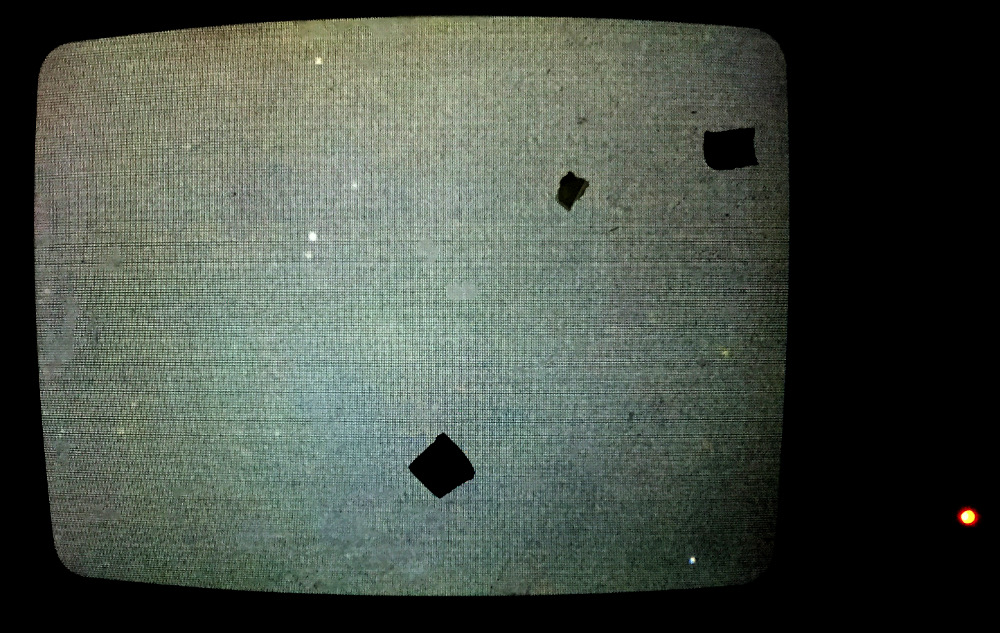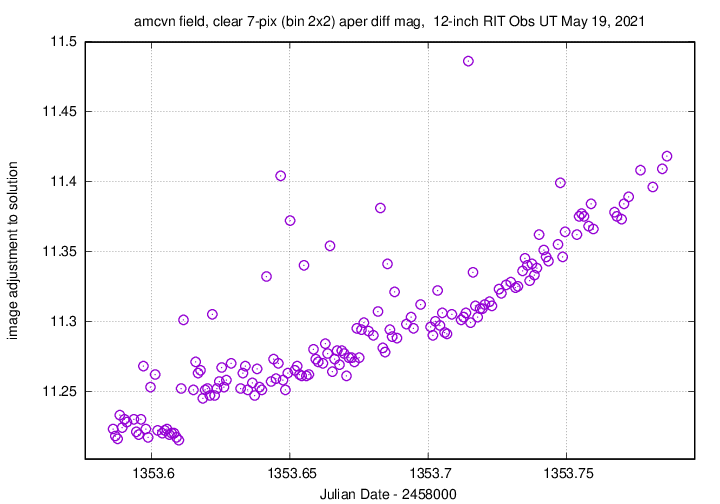
On the night of May 18/19, 2021, under good conditions, I acquired images of the cataclysmic variable star AM CVn. One can find information about it at
Joe Patterson of the CBA requested data on this star, so I gave it a try. The star is at the faint limit for time series photometry with our equipment, but I wanted to test it.
The main setup was:
Notes from the night:
The object is located at
RA = 12 34 54.6 Dec = +37 37 44.1 (J2000)
A chart of the field is shown below. The size of the chart is about 19 x 26 arcminutes.

I've marked the location of several comparison stars as well.
star AAVSO B V ----------------------------------------------------------- A APASS 8699612 12.226 11.639 B APASS 8699621 12.952 12.290 -----------------------------------------------------------
I took a photo of the finder TV's screen when pointing to this target; this could be a useful reference for the future:

The sky value shows that the sky was clear.

The FWHM drifted up over time; I should have made real focus checks instead of simply moving focus based on temperature.

Using aperture photometry with a radius of 7 pixels in a clear filter (binned 2x2, each pixel is 1.24 arcsec, so a radius of 8.7 arcsec) for all exposures, I measured the instrumental magnitudes of a number of reference stars and the target. Following the procedures outlined by Kent Honeycutt's article on inhomogeneous ensemble photometry, I used all stars available in each image to define a reference frame, and measured each star against this frame.
Sigma-vs-mag plots show that the floor was about 0.005 mag for 60-second exposures, which surprises me; I thought the sky was relatively bright, due to Moon.

The image-to-image zeropoint shows some outliers, due to trailing.

Here is the light curve of the object and several field stars in the clear filter; I've shifted the instrumental magnitudes so that star "B" = APASS 8699621 has the value given by APASS as its V-band magnitude.


A periodogram -- thanks to the NASA Exoplanet Archive tool! -- shows a strong peak close to the known 525-second (= 0.006076 day) period.

You can download my measurements below. A copy of the header of the file is shown to explain the format.
# Measurements of AM_CVn made at RIT Obs, UT 2021 May 19, # in good conditions, # by Michael Richmond, # using Meade 12-inch LX200 and ATIK 11000. # Exposures 60 seconds long, clear filter. # Tabulated times are midexposure (FITS header time - half exposure length) # and accurate only to +/- 1 second (??). # 'mag' is a differential magnitude based on ensemble photometry # using a circular aperture of radius 7 pix = 8.7 arcseconds. # which has been shifted so APASS_8699621 has mag=12.29 # which is its V-band magnitude according to APASS. # # UT_day JD HJD mag uncert May19.08602 2459353.58602 2459353.58778 13.941 0.023 May19.08683 2459353.58683 2459353.58859 13.932 0.023 May19.08764 2459353.58764 2459353.58940 13.933 0.023
Last modified 5/19/2021 by MWR.